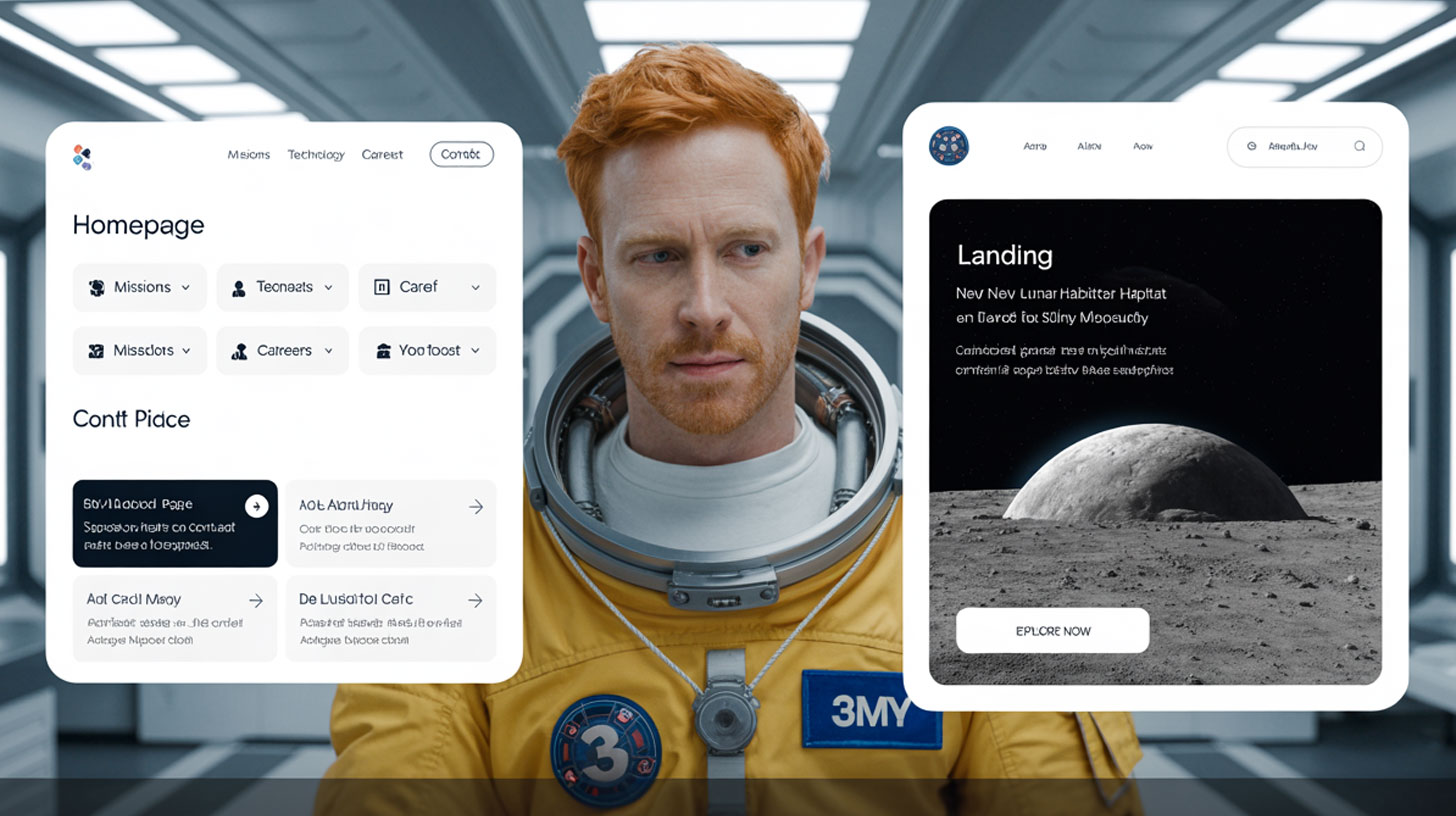When building a website to support your business, two terms come up constantly: homepage and landing page. Though they might seem interchangeable at first, they serve very different purposes — and confusing the two can lead to lower conversion rates, diluted messaging, and missed business opportunities.
In this guide, we’ll break down the differences between a homepage and a landing page in terms of structure, purpose, user journey, SEO, and design — and when you should use each.
1. Purpose and Focus
Homepage:
- The homepage acts as the main entry point to your website.
- It’s designed for exploration — introducing your brand, linking to multiple sections (about, services, blog, contact, etc.), and offering navigation.
- Its goal is to give a snapshot of who you are and what you offer.
Landing Page:
- A landing page is created for a specific goal: usually to drive conversions.
- It’s typically linked from paid ads, email campaigns, or social media.
- There is usually one focus: sign up, purchase, download, book a call, etc.
2. Navigation
Homepage:
- Includes full site navigation: menu bar, links to other pages, footer with sitewide links.
- Visitors are encouraged to explore and learn more.
Landing Page:
- Navigation is usually limited or hidden.
- The idea is to remove distractions and keep users focused on the call to action.
- Some landing pages don’t even have a top nav bar.
Example:
- Homepage: “/”, with nav links to blog, pricing, contact, etc.
- Landing page: “/summer-offer”, with a single form and no links to other pages.
3. Content Structure
Homepage:
- Broad messaging.
- Multiple value propositions.
- Links to different services/products.
- Social proof (testimonials, logos), but placed deeper.
Landing Page:
- Targeted messaging that matches the user intent.
- Singular CTA (call to action) repeated multiple times.
- Persuasive copy: pain points, benefits, urgency.
- Social proof placed early and often.
- Includes a lead form or a button that triggers the desired action.
4. Traffic Sources
Homepage:
- Typically attracts organic search, branded queries, direct traffic.
- Visitors may not be ready to convert yet — they’re browsing.
Landing Page:
- Tied to specific marketing campaigns.
- Traffic is often paid (Google Ads, Meta Ads, influencer link, etc.) or email.
- These users are farther down the funnel and closer to a buying decision.
5. SEO and Analytics
Homepage:
- Often optimized for brand keywords and general topics.
- Gets the most backlinks and is the anchor for your site’s domain authority.
- Important for site structure and internal linking.
Landing Page:
- Often excluded from indexation (“noindex” tag), especially for paid ads.
- Less about ranking on Google — more about quality score and conversion rate.
- Analytics focus on bounce rate, click-through rate, and form submissions.
6. Design and Layout
Homepage:
- Balanced layout with branding, intro copy, featured content, and footer.
- Rich media like hero images, animations, and featured articles.
Landing Page:
- Minimal distractions.
- Attention-grabbing headline, subheadline, short-form copy.
- Above-the-fold CTA, followed by scannable proof.
- Split into clear sections: problem, solution, CTA.
7. Conversion Optimization
Landing pages are laser-focused on performance:
- A/B testing headlines, CTAs, images.
- Heatmaps and scroll-depth tracking.
- CRO tools like Unbounce, Instapage, or Elementor’s landing templates.
- Dynamic text replacement for better ad-message match.
Homepages, in contrast, are not optimized for one goal — they are meant to route traffic, not capture it.
Comparison Table
| Feature | Homepage | Landing Page |
|---|---|---|
| Primary Goal | Brand awareness, exploration | Lead capture, purchase, sign-up |
| Navigation | Full navigation, multiple links | Limited or no navigation |
| Content | Broad, multi-topic | Narrow, campaign-focused |
| SEO | Indexed, ranks for keywords | Often noindexed, paid traffic |
| Traffic Source | Organic, branded, direct | Paid ads, social, email |
| Call to Action | Multiple (explore, contact, read) | One (buy, download, subscribe) |
| Analytics Focus | Traffic distribution, bounce | Conversions, ROAS, CPL |
| Conversion Rate | Lower (general traffic) | Higher (targeted traffic + CTA) |
When to Use a Homepage
- You want to introduce your business to new visitors.
- You want to provide access to all major site sections.
- You’re building organic presence for your brand.
- You want to serve returning users looking for general info.
When to Use a Landing Page
- You’re running Google or Meta Ads.
- You have a seasonal or limited-time offer.
- You’re testing a specific lead magnet.
- You want to isolate user behavior and improve conversion tracking.
Bonus: Can a Landing Page Be a Homepage?
Yes, but with tradeoffs. Some startups use a one-page site that acts as both a homepage and landing page. In early stages, this works — especially if your product is narrow in scope.
However, as your business scales, it’s best to separate your homepage (for navigation and context) from your landing pages (for performance marketing).
Final
Both homepage and landing page are essential — just not for the same reasons. Think of them as different tools in your marketing toolbox. One helps people find their way; the other gives them one clear next step.
Need help designing high-converting landing pages or improving your homepage for SEO? Our team at 3MY can help.










